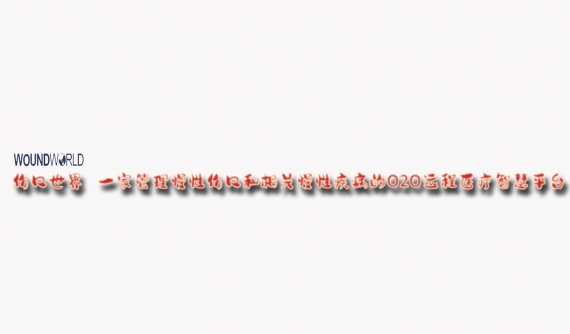It may sound bizarre that those of us involved with the Legs Matter Campaign are passionate about legs and feet and we want you to be too! We believe that the more of us on board, the more positive the impact will be on our own health and wellbeing and that of the nation! This editorial suggests three ways to make that difference and get the buzz.
Loving and looking after your legs and feet
Our legs and feet take us where we want to go, keep us mobile, independent and able to do so many things we enjoy. We may want to keep them looking good and sometimes that means we treat them badly, such as wearing high heels. If our legs and feet are not happy, they tell us loudly and clearly — we all know the agony of blisters from wearing shoes that don’t fit well: if we spend too long on our feet, our tired and aching legs serve as a warning to take a rest.
It is odd, however, that we sometimes pay little heed to warnings they give us that more serious problems threaten. Calf pain after walking short distances may indicate arterial circulation problems: pain may also indicate thrombosis or varicose veins. Occasional swelling of feet and ankles might tell us we have been sitting or standing too long, if persistent or a regular occurrence, it almost certainly indicates the lymphatic drainage system is not working well and it is important to establish and treat the cause and to treat the swelling proactively to prevent other complications. At the very least we should ask ourselves if it’s simply telling us we need to be a bit more active to stimulate venous and lymphatic return, lose weight or wear light compression. Listening to our legs and feet at this stage will keep them serving us well for years to come.
Finding leg and feet problems
Prevention is always better than cure and promoting a healthy lifestyle with regular activity, healthy diet and weight as well as not smoking is key to minimising the development of many leg and feet problems. If it can’t be prevented, an early response to seemingly minor leg and foot problems is the next best thing.
The Legs Matter coalition aims to raise awareness of common legs and foot problems, such as leg ulceration, peripheral arterial disease, chronic oedema/lymphoedema and diabetic foot ulcers (DFU). We want people to know how to recognise early signs of these problems, to understand what we can all do and when to seek professional help. We want to empower them to ask for and indeed, expect appropriate help.
We also want professionals to respond promptly with sound advice and take seriously the apparently minor problems, which in feet and legs, can quickly escalate to a more serious problem that is difficult to manage. We may be treating patients for completely unrelated reasons when they report a foot or leg problem. Do not dismiss a patient concern or think it is an inevitable consequence of ageing: look out for skin changes, swelling or wounds on their legs and feet — get excited that you have an opportunity prevent the development of a potentially disabling condition such as a hard-to-heal wound by ensuring it is accurately assessed and evidence-based interventions initiated. Referring on to someone more expert is not failure; it is good care. Remember that expert may be from a different specialism, e.g. a tissue viability or vascular nurse, podiatrist or lymphoedema practitioner. If in any doubt take a look at the great resources for the public and professionals on www.legsmatter.org on what is normal, what is not and where to get more help.
Getting a buzz from better treatment outcomes
Many members of the public seem to hold the belief that swollen ankles are to be expected as they get older so don’t report this symptom. If they do mention this to a health professional, the response may reinforce the misunderstanding that it is something they just have to live with. There are also misunderstandings that leg ulcers are difficult to heal and a long term problem. When these problems don’t resolve, it is easy to believe that the best that can be done is to ‘manage’ them and minimise complications such as infection. The Legs Matter Campaign is on a mission to show that it is possible to turn such situations around and have more successful treatment outcomes.
What would it feel like to see more of those patients ‘on our long-term books’ with wounds that won’t heal or swelling that won’t resolve get their life back, be free of pain and be discharged? How great would it be to see healing rates for new patients rise? Many factors contribute to poor outcomes for patients with chronic problems and keep them ‘on the books’ long-term. While some factors may be outside our sphere of influence, it is important that we take positive steps to address those that are modifiable.
Achieving better outcomes calls for a fundamental shift in attitudes — an expectation of healing and success, rather than simply managing the wound or swelling. Legs Matter want everyone to know that healing and reduction of swelling are realistic expectations. It does not necessarily mean doing more, but doing differently. Taking a fresh and objective look at your patient outcomes is a first step. There is evidence of significant variations in healing of leg ulcers for example; how do your healing rates compare? What do you do if healing is slow?
Questioning our own practice and outcomes is daunting. However, this challenge comes with guidance, resources and support to empower professionals and patients to do things differently. The National Wound Care Strategy Programme (NWCSP)Lower Limb Recommendations (2020) address the need for regular review and assessment with escalation and key points if healing is not progressing as expected. We should also be asking key questions if, for example, venous leg ulcers are not healed within 12 weeks, in which case, continuing with the same treatment approaches is not an option.
How we assess, diagnose lower limb wounds is recognised as a core clinical priority area by NHS England and NHS Improvement and from April 2022 is included in the Commissioning for Quality and Innovation (CQUIN) scheme (CCG11) to incentivise clinicians and services for improvements (NHS England, 2022). This supports NICE Guideline CG147 and CG168 (NICE, 2013) and SIGN Guideline 120. (SIGN, 2010) Perhaps this is an opportunity for your service to review any locally agreed pathways that may not be serving you or your patients well.
In challenging some of the accepted wisdom and culture in relation to management of lower limb problems, the Legs Matter Campaign recognises that changing the culture and practice depends on much more than clinicians. The recently published consensus document "Making Legs Matter: A case for system change and transformation in lower limb management" (Atkin et al, 2021) seeks to engage commissioners and managers to play their part in improving treatment outcomes and doing so much more cost effectively. The document is available to download on the Legs Matter website https://legsmatter.org/updates-events/ making-legs-matter-a-case-for-system-change and-transformation-in-lower-limb-management/ Please take a look and share this with colleagues and managers to help us transform the care of people with leg and foot problems and get them all buzzing about Legs and Feet!
REFERENCES
1. Atkin L, Hopkins A, Gardner S et al (2021) Making Legs Matter: A case for system change and transformation in lower-limb management. J Wound Care 30(Sup11):S1–S25 https://doi.org/10.12968/ jowc.2021.30.sup11.s1
2. National Institute for Health and Care Excellence (2013) Varicose veins: diagnosis and management Clinical guideline [CG168]
3. National Wound Care Strategy Programme (NWCSP) (2020) Lower Limb Recommendations. https://tinyurl.com/ea3cdz6v (accessed 1 September 2021). https://tinyurl.com/yzsmyezj (accessed 20 February 2022)
4. NHS England (2022) Commissioning for Quality and Innovation (CQUIN): 2022/23 (accessed 20 February 2022)
5. Scottish Intercollegiate Guidelines Network (2010) Management of chronic venous leg ulcers. https://tinyurl.com/5n7zrs5p (accessed 20 February 2022)
This article is excerpted from the Wounds UK | Vol 18 | No 1 | 2022 by Wound World.



